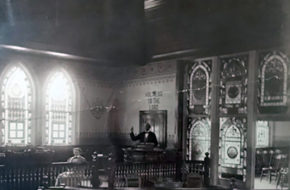When you work in communications, your daily tasks can be pretty varied, from developing an entire strategic plan to … well … redoing a phone tree.
What’s a phone tree?
It’s the sequence of options people hear when they call a main number for an organization … you know, “to speak to this program, press 1,” and so on. I don’t do any of the technical phone stuff; rather, I review the sequence of the tree, edit the accompanying text and arrange for the professional recording you hear.
Diakon had not revised its tree for a while and when I began the update process, I found I had quite a few changes to make, sometimes because programs had been transitioned to other providers, sometimes because they had moved geographically or administratively or, in an instance or two, because they had closed.
In some ways, tackling a phone-tree update is a history review.
The process reminds me of the challenges sometimes involved in such transitions. In fact, a friend whose group membership dwindled by the month refused to consider making changes that would have potentially broadened membership. Rather than dilute the group’s primary purpose, he said, he’d rather—like a good captain—go down with the ship. I guess that’s okay, but that approach certainly does not sustain the group’s original purpose. Sort of a lose-lose proposition.
These statements do not make light of the difficulties of some changes. A program closure can certainly mean loss of employment for a number of people.
Yet I’m proud of the fact most of the history reflected in the recent Diakon phone-tree update—because of a refocusing and sharpening of Diakon’s core ministries—represented the transitioning of programs to other organizations providing similar services. In these cases, a win-win proposition.
We may not always have had phone-trees, but our near-150-year history is filled with developments that would have resulted in changes to those trees. Perhaps the most-significant were the closures of our two children’s homes, processes that represented moves to community-based services for children and youths.
Now, a half-century after those closures, we’re set to begin the rebirth of one of those homes’ key buildings, Old Main on the campus of The Lutheran Home at Topton, through a major construction project set to begin late this year. (LINK TO NEWS ARTICLE).
When the work is completed, and a Center for Permanency created on Old Main’s second floor, the building will have come full circle, once again housing services for at-risk children and youths. In addition, Diakon will have emphasized wise stewardship of resources by relocating some Ministry Support offices from leased space to Old Main.
And it will be time for one more phone-tree update.
Because we review comments, they do not appear immediately. Please do not submit each comment more than once. Please review our comment policy.



